-
 When “One Size Fits All” Fits None: A Commentary on the Impacts of the “Draft Canadian Breast Cancer Screening Guidelines” on Racialized Populations in Canada
When “One Size Fits All” Fits None: A Commentary on the Impacts of the “Draft Canadian Breast Cancer Screening Guidelines” on Racialized Populations in Canada -
 Perioperative Chemo-Immunotherapy in Non-Oncogene-Addicted Resectable Non-Small Cell Lung Cancer (NSCLC): Italian Expert Panel Meeting
Perioperative Chemo-Immunotherapy in Non-Oncogene-Addicted Resectable Non-Small Cell Lung Cancer (NSCLC): Italian Expert Panel Meeting -
 Feasibility and Acceptability of Social Prescribing for Cancer Survivors
Feasibility and Acceptability of Social Prescribing for Cancer Survivors
Journal Description
Current Oncology
Current Oncology
is an international, peer-reviewed, open access journal published online by MDPI (from Volume 28 Issue 1-2021). Established in 1994, the journal represents a multidisciplinary medium for clinical oncologists to report and review progress in the management of this disease. The Canadian Association of Medical Oncologists (CAMO), the Canadian Association of Psychosocial Oncology (CAPO), the Canadian Association of General Practitioners in Oncology (CAGPO), the Cell Therapy Transplant Canada (CTTC), the Canadian Leukemia Study Group (CLSG) and others are affiliated with the journal and their members receive a discount on the article processing charges.
- Open Access— free for readers, with article processing charges (APC) paid by authors or their institutions.
- High Visibility: indexed within Scopus, SCIE (Web of Science), PubMed, MEDLINE, PMC, Embase, and other databases.
- Journal Rank: JCR - Q2 (Oncology)
- Rapid Publication: manuscripts are peer-reviewed and a first decision is provided to authors approximately 19.8 days after submission; acceptance to publication is undertaken in 2.4 days (median values for papers published in this journal in the second half of 2024).
- Recognition of Reviewers: APC discount vouchers, optional signed peer review, and reviewer names published annually in the journal.
Impact Factor:
2.8 (2023);
5-Year Impact Factor:
2.9 (2023)
Latest Articles
PTEN Mutations Associated with Increased Recurrence and Decreased Survival in Patients with Prostate Cancer Spinal Metastasis
Curr. Oncol. 2025, 32(6), 331; https://doi.org/10.3390/curroncol32060331 - 4 Jun 2025
Abstract
Introduction: Prostate cancer with spinal metastases (PCSM) is associated with high morbidity and mortality. The impact of biomarkers on the prognosis of spinal metastases, however, remains unclear. Objective: This study explored associations between potential biomarkers, treatment modalities, survival, and neurological outcomes in PCSM
[...] Read more.
Introduction: Prostate cancer with spinal metastases (PCSM) is associated with high morbidity and mortality. The impact of biomarkers on the prognosis of spinal metastases, however, remains unclear. Objective: This study explored associations between potential biomarkers, treatment modalities, survival, and neurological outcomes in PCSM patients. Methods: We conducted a retrospective analysis of 68 patients as part of a neurosurgical cohort with PCSM at a comprehensive cancer center from 2013 to 2023, examining the influence of potential biomarkers, treatment modalities, and demographics on prognosis. The primary outcomes were the identification of biomarkers, overall survival (OS) in years, survival after spinal metastasis in years, spinal metastasis recurrence, and postoperative neurological outcomes via Frankel scores. Results: All the patients (n = 68) had adenocarcinoma, and the median age was 69 years. The mortality rate was 66% with a median OS of 6 years. Seventy-two biomarkers were identified. An accelerated failure time model (AFT) showed that radiotherapy to the prostate increased the OS (TR = 1.805, p = 0.001), while smoking status (TR = 0.625, p < 0.001) and PTEN gene mutations (TR = 0.504, p = 0.006) were associated with decreased OS. Kaplan–Meier analysis associated PTEN mutations with reduced median OS using the Gehan–Breslow–Wilcoxon test (3.50 vs. 9.49 years; p = 0.001). PTEN mutations were trending towards but were not significant for decreased survival following spinal metastases (2.04 vs. 3.15 years; p = 0.08). Both PTEN (p = 0.02) and Tumor Protein 53 (TP53, p = 0.01) mutations were associated with increased spinal metastasis recurrence when analyzed using Fisher’s exact test. No differences were observed in the median OS or survival after spinal metastases among patients with or without androgen receptor splice variant-7 (AR-V7), prostate-specific membrane antigen (PSMA), TP53, or other analyzed biomarkers. Similarly, neither age, receipt of chemotherapy, nor radiotherapy to the spine correlated with OS. Only chemotherapy was associated with a decreased postoperative Frankel Score (p = 0.002). Conclusions: PTEN mutations and smoking status were associated with decreased OS in patients with PCSM. Both PTEN and TP53 mutations were associated with increased spinal metastasis recurrence. Receipt of radiotherapy to the prostate was correlated with prolonged survival, whereas receipt of radiotherapy to the spine was not. Chemotherapy was associated with decreased postoperative neurological outcomes.
Full article
(This article belongs to the Section Genitourinary Oncology)
►
Show Figures
Open AccessCase Report
Perivascular Epithelioid Cell Tumor (PEComa) of the Sigmoid Colon: Case Report and Literature Review
by
Gintare Slice, Rokas Stulpinas, Tomas Poskus and Marius Kryzauskas
Curr. Oncol. 2025, 32(6), 330; https://doi.org/10.3390/curroncol32060330 - 3 Jun 2025
Abstract
Perivascular epithelioid cell tumors (PEComas) are rare mesenchymal neoplasms characterized by perivascular epithelioid cell proliferation. They can occur in various organs, but colonic PEComas are exceptionally rare, showing diagnostic challenges due to their nonspecific clinical presentation and similar features to those of other
[...] Read more.
Perivascular epithelioid cell tumors (PEComas) are rare mesenchymal neoplasms characterized by perivascular epithelioid cell proliferation. They can occur in various organs, but colonic PEComas are exceptionally rare, showing diagnostic challenges due to their nonspecific clinical presentation and similar features to those of other colorectal tumors. We present a case of a 61-year-old female with defecation accompanied by blood clots, initially diagnosed with a suspected tumor in the sigmoid colon. Despite initial biopsy yielding non-informative material, repeat colonoscopy and imaging studies revealed a malignant tumor with multinucleated giant (osteoclast-like) cells and probable p53 mutation, most likely of mesenchymal origin. Robotic surgical resection was performed, and ultimately pathological examination refined the diagnosis as a malignant PEComa of the colon. This case demonstrates the importance of considering PEComa in the differential diagnosis of colonic tumors. Further research is needed to ascertain the clinical behavior and optimal treatment for colonic PEComas.
Full article
(This article belongs to the Section Gastrointestinal Oncology)
Open AccessReview
Mechanisms and Functions of γδ T Cells in Tumor Cell Recognition
by
Jing Tang, Chen Wu, Jintong Na, Yamin Deng, Simin Qin, Liping Zhong and Yongxiang Zhao
Curr. Oncol. 2025, 32(6), 329; https://doi.org/10.3390/curroncol32060329 - 3 Jun 2025
Abstract
γδ T cells are among the first line of defense in the immune system, playing a crucial role in bridging innate and adaptive immunity. Although γδ T cells are crucial for tumor immune surveillance, the complete mechanism by which γδ T cell receptors
[...] Read more.
γδ T cells are among the first line of defense in the immune system, playing a crucial role in bridging innate and adaptive immunity. Although γδ T cells are crucial for tumor immune surveillance, the complete mechanism by which γδ T cell receptors identify molecular targets in target cells remains unknown. Target cells can produce phosphoantigens (PAgs) via the mevalonate pathway or the methylerythritol phosphate pathway. The BTN3A1–BTN2A1 complex undergoes conformational changes in its extracellular domains upon binding to PAgs, leading to Vγ9Vδ2 T cell recognition. However, the structural basis of how Vγ9Vδ2 T cells recognize changes in this complex remains elusive. This review provides a detailed overview of the historical progress and recent discoveries regarding how Vγ9Vδ2 T cells recognize and target tumor cells. We also discuss the potential of γδ T cells immunotherapy and their role as antitumor agents.
Full article
(This article belongs to the Section Cell Therapy)
►▼
Show Figures

Graphical abstract
Open AccessArticle
Prognostic Factors and Treatment Outcomes in Gallbladder Cancer Patients Undergoing Curative Surgery: A Multicenter Retrospective Cohort Study
by
Bowen Xu, Yanjiang Yin, Jianping Chang, Zhiyu Li, Xinyu Bi, Jianqiang Cai and Xiao Chen
Curr. Oncol. 2025, 32(6), 328; https://doi.org/10.3390/curroncol32060328 - 3 Jun 2025
Abstract
Background: Gallbladder cancer (GBC) is a highly aggressive malignancy often diagnosed at an advanced stage due to its asymptomatic onset. Despite surgery being the only potentially curative option, recurrence and poor prognosis remain common, especially in advanced-stage diseases. There is limited consensus regarding
[...] Read more.
Background: Gallbladder cancer (GBC) is a highly aggressive malignancy often diagnosed at an advanced stage due to its asymptomatic onset. Despite surgery being the only potentially curative option, recurrence and poor prognosis remain common, especially in advanced-stage diseases. There is limited consensus regarding the extent of lymphadenectomy, hepatic resection, and the role of adjuvant therapies. Identifying prognostic factors and optimizing treatment strategies are critical for improving outcomes. This multicenter retrospective study was conducted to evaluate the clinical and pathological predictors of survival and recurrence in GBC patients that underwent radical surgery and to assess the potential benefit of adjuvant therapies in advanced stages. Methods: This was a retrospective cohort study of GBC patients who underwent curative-intent resection for GBC between 2010 and 2022 at two tertiary medical centers in China. The baseline characteristics, surgical data, pathology, adjuvant therapy, and follow-up outcomes were analyzed. The survival outcomes were assessed using Kaplan–Meier methods and Cox regression models. Subgroup analyses were conducted to explore the impact of postoperative adjuvant chemotherapy, period of surgical treatment, and extent of resection. Multiple imputation was used to address missing data. Results: The 5-year overall survival (OS) rate was 57.4%. Independent predictors of a poorer OS included CA19-9 > 30 U/mL (HR = 1.861, p = 0.003), poor/moderate-to-poor differentiation (HR = 2.134, p = 0.004), T3–T4 stage (HR = 2.685, p = 0.001), N1–N2 stage (HR = 2.217, p = 0.002), M1 stage (HR = 2.308, p = 0.001), and a high CAN score (HR = 1.875, p = 0.009). Adjuvant chemotherapy improved the OS in the stage III–IV patients (24.8 vs. 17.3 months, p = 0.036), though the DFS improvement was not significant (p = 0.133). No survival difference was observed between the segment IVb + V resection and wedge resection in the T2b patients. The patients treated after 2017 had a better OS (p = 0.024), possibly due to improved surgical techniques and perioperative care. Conclusions: Radical surgery remains critical for GBC. Accurate staging and tailored perioperative strategies, including chemotherapy, may improve outcomes, though further prospective studies are needed to validate these findings.
Full article
(This article belongs to the Special Issue Biliary Tract Cancer Updates: Advancements and Insights)
►▼
Show Figures

Figure 1
Open AccessFeature PaperArticle
Voices from the Margins: Barriers and Facilitators to HPV Self-Sampling Among Structurally Marginalized People with a Cervix in the Greater Toronto Area and Ontario
by
Mandana Vahabi, Natasha Kithulegoda, Masoomeh Moosapoor, Aisha Lofters, Josephine Pui-Hing Wong, Abdolreza Akbarian and Jenna Hynes
Curr. Oncol. 2025, 32(6), 327; https://doi.org/10.3390/curroncol32060327 - 3 Jun 2025
Abstract
Sex workers and formerly incarcerated people with a cervix face significant structural, interpersonal, and emotional barriers to cervical cancer screening, despite being at elevated risk for HPV infection. HPV self-sampling (HPV-SS) is a validated, user-directed method that has the potential to address these
[...] Read more.
Sex workers and formerly incarcerated people with a cervix face significant structural, interpersonal, and emotional barriers to cervical cancer screening, despite being at elevated risk for HPV infection. HPV self-sampling (HPV-SS) is a validated, user-directed method that has the potential to address these barriers, yet it remains excluded from Ontario’s organized screening program. This qualitative study explored the lived experiences of structurally marginalized individuals with a cervix who were offered HPV-SS as part of a mixed-methods pilot in the Greater Toronto Area. Five virtual focus groups were conducted with 34 participants, including both those who used the HPV-SS kit and those who declined it. Using inductive thematic analysis, we identified barriers to traditional screening including fear, stigma, mistrust of healthcare providers, logistical constraints, and a lack of accessible information. HPV-SS was widely described as more acceptable, empowering, and emotionally manageable, offering participants autonomy, privacy, and control over their care. Concerns included swab design, uncertainty about correct use, and unclear follow-up after positive results. Participants offered concrete, community-informed recommendations to improve HPV-SS implementation, including opt-in distribution models, gender-affirming language, and trauma-informed educational materials. The findings highlight the urgent need to integrate HPV-SS into organized screening programs to advance equitable access to cervical cancer prevention for marginalized populations.
Full article
(This article belongs to the Special Issue Action and Impact: Prevention and Screening Strategies Contributing to the Elimination of Cervical Cancer)
►▼
Show Figures

Figure 1
Open AccessArticle
Self-Management Support for Cancer Survivors: A Descriptive Evaluation of the Symptom Navi Training from the Perspective of Health Care Professionals
by
Marika Bana, Selma Riedo and Karin Ribi
Curr. Oncol. 2025, 32(6), 326; https://doi.org/10.3390/curroncol32060326 - 2 Jun 2025
Abstract
The Symptom Navi Program (SNP) is a self-management support (SMS) intervention for people with cancer. It consists of self-management supportive leaflets, educational conversations, and two standardized training sessions. A descriptive quality evaluation method was used to evaluate SNP implementation across 14 cancer services
[...] Read more.
The Symptom Navi Program (SNP) is a self-management support (SMS) intervention for people with cancer. It consists of self-management supportive leaflets, educational conversations, and two standardized training sessions. A descriptive quality evaluation method was used to evaluate SNP implementation across 14 cancer services from 2021 to 2024. We evaluated training content, methods, and participants’ confidence to use SMS in their clinical routine. Nurses, social workers, and psychologists completed ad hoc closed and open-ended questions after each training. The Work Sense of Coherence (Work-SoC) scale was used to elicit participants’ self-reported perceptions of their work context at cancer services. A series of descriptive analyses were conducted on the Work-SoC scale, the training content, and the methods. In addition, training-specific questions and predefined hypotheses were correlated. Thematic analysis was employed to examine open-ended questions. The SNP training content and methods largely met participants’ needs. Participants’ confidence in applying educational conversations decreased over time. The findings suggest a robust correlation between the application of educational conversations in daily routines and the participants’ perceptions regarding the comprehensibility and manageability of their work situations. Future research focusing on the implementation of SMS in clinical practice should examine the work context.
Full article
(This article belongs to the Special Issue Self-Management/Patient Activation and Self-Management Support Interventions for Cancer Survivors)
►▼
Show Figures
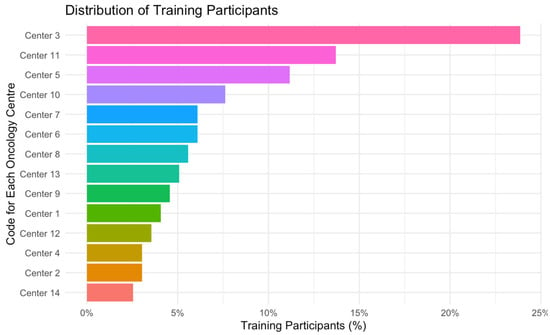
Figure 1
Open AccessSystematic Review
Incidence and Risk Factors of Platinum-Based Chemotherapy-Induced Nausea and Vomiting: A Systematic Review and Meta-Analysis
by
Kaili Jin, Xianlei Lin, Xiaoting Xia, Huiling Ye, Dan Yang, Ying Fan, Qiuhua Sun and Rongyun Wang
Curr. Oncol. 2025, 32(6), 325; https://doi.org/10.3390/curroncol32060325 - 31 May 2025
Abstract
Background: Platinum-based chemotherapy significantly increases the risk of nausea and vomiting, which can impair the treatment’s efficacy and the patient’s quality of life. This meta-analysis examines the incidence and risk factors of platinum-based chemotherapy-induced nausea and vomiting (PINV) in patients treated with this
[...] Read more.
Background: Platinum-based chemotherapy significantly increases the risk of nausea and vomiting, which can impair the treatment’s efficacy and the patient’s quality of life. This meta-analysis examines the incidence and risk factors of platinum-based chemotherapy-induced nausea and vomiting (PINV) in patients treated with this chemotherapy. Methods: This systematic review and meta-analysis were conducted in accordance with the PRISMA 2020 guidelines. We conducted a literature search in the databases PubMed, Embase, Web of Science, WanFang, China Science and Technology Journal Database (VIP), China National Knowledge Infrastructure (CNKI), and Chinese Medical Association Journal Database (CMAJD) through to 20 January 2025. Studies that reported the incidence and identified risk factors of nausea and vomiting specifically in patients receiving platinum-based chemotherapy were included in the review. The data were extracted independently by two reviewers. The odds ratios (ORs) for each risk factor were calculated from the included studies. Sensitivity analyses and additional subgroup analyses were performed to ensure the robustness of our findings. Results: This meta-analysis included 32 studies involving 14,207 participants. Female sex (OR = 2.363, 95% CI = 1.363–4.096, p = 0.002), anxiety (OR = 1.689, 95% CI = 1.057–2.700, p = 0.028), fatigue (OR = 1.413, 95% CI = 1.145–1.744, p = 0.001), motion sickness (OR = 1.816, 95% CI = 1.266–2.605, p = 0.001), and a history of vomiting during chemotherapy (OR = 2.728, 95% CI = 1.468–5.069, p = 0.002) were significantly associated with an increased risk of PINV. Conclusion: Female sex, anxiety, fatigue, motion sickness, and a history of vomiting during chemotherapy increase the risk of PINV during platinum-based treatments.
Full article
(This article belongs to the Section Palliative and Supportive Care)
►▼
Show Figures
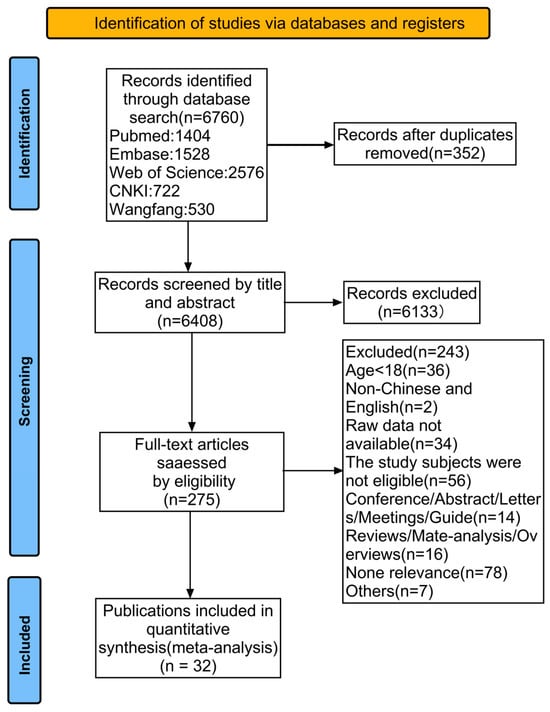
Figure 1
Open AccessArticle
Global Incidence Trend of Early-Onset Obesity-Related and Non-Obesity-Related Cancers
by
Miyu Terashima, Kota Nakayama, Satoko Ugai, Hwa-Young Lee, Yuta Tsukumo, Etsuji Suzuki, Hiroki Mizuno, Minkyo Song, Naoko Sasamoto, Ichiro Kawachi and Tomotaka Ugai
Curr. Oncol. 2025, 32(6), 324; https://doi.org/10.3390/curroncol32060324 (registering DOI) - 31 May 2025
Abstract
►▼
Show Figures
The global rise in obesity prevalence and the incidence of early-onset cancer (diagnosed between 20 and 49 years of age) is a serious public health concern. We, therefore, evaluated the recent global trends in the incidence of early-onset obesity-related cancers and compared them
[...] Read more.
The global rise in obesity prevalence and the incidence of early-onset cancer (diagnosed between 20 and 49 years of age) is a serious public health concern. We, therefore, evaluated the recent global trends in the incidence of early-onset obesity-related cancers and compared them to those of non-obesity-related cancers. We obtained age-standardized incidence rates of early-onset cancers diagnosed between 2000 and 2012 in 44 countries from the Cancer Incidence in Five Continents database. Using joinpoint regression models, we calculated the average annual percentage changes (AAPCs) and their corresponding 95% confidence intervals (95% CIs) for combined and individual categories of obesity-related cancers (11 and 9 cancer types in females and males, respectively) and non-obesity-related cancers (12 cancer types in both females and males). Differences in the AAPC were assessed by comparing 95% CIs, where nonoverlapping 95% CIs were considered statistically significantly different. We observed statistically significant positive AAPCs for early-onset obesity-related cancers in all available countries combined among females (global AAPC, 4.3%; 95% CI, 4.1–4.6%) and males (global AAPC, 1.4%; 95% CI, 1.2–1.7%). When analyzed by countries, we observed statistically significant positive AAPCs in 26 countries among females and 11 countries among males. AAPCs for early-onset obesity-related cancers were statistically significantly higher than those of non-obesity-related cancers in several regions, especially North America and Oceania. In conclusion, this study indicates that the incidence of early-onset obesity-related cancers exhibited a more pronounced increasing trend than non-obesity-related cancers among both sexes in many countries and regions.
Full article
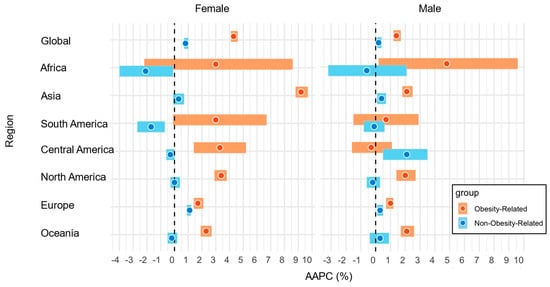
Figure 1
Open AccessArticle
A Clinical–Radiomics Nomogram for the Preoperative Prediction of Aggressive Micropapillary and a Solid Pattern in Lung Adenocarcinoma
by
Xiangyu Xie, Lei Chen, Kun Li, Liang Shi, Lei Zhang and Liang Zheng
Curr. Oncol. 2025, 32(6), 323; https://doi.org/10.3390/curroncol32060323 - 30 May 2025
Abstract
Background: A micropapillary pattern (MP) and solid pattern (SP) in lung adenocarcinoma (LUAD), a major subtype of non-small-cell lung cancer (NSCLC), are associated with a poor prognosis and necessitate accurate preoperative identification. This study aimed to develop and validate a predictive model combining
[...] Read more.
Background: A micropapillary pattern (MP) and solid pattern (SP) in lung adenocarcinoma (LUAD), a major subtype of non-small-cell lung cancer (NSCLC), are associated with a poor prognosis and necessitate accurate preoperative identification. This study aimed to develop and validate a predictive model combining clinical and radiomics features for differentiating a high-risk MP/SP in LUAD. Methods: This retrospective study analyzed 180 surgically confirmed NSCLC patients (Stages I–IIIA), randomly divided into training (70%, n = 126) and validation (30%, n = 54) cohorts. Three prediction models were constructed: (1) a clinical model based on independent clinical and CT morphological features (e.g., nodule size, lobulation, spiculation, pleural indentation, and vascular abnormalities), (2) a radiomics model utilizing LASSO-selected features extracted using 3D Slicer, and (3) a comprehensive model integrating both clinical and radiomics data. Results: The clinical model yielded AUCs of 0.7975 (training) and 0.8462 (validation). The radiomics model showed superior performance with AUCs of 0.8896 and 0.8901, respectively. The comprehensive model achieved the highest diagnostic accuracy, with training and validation AUCs of 0.9186 and 0.9396, respectively (DeLong test, p < 0.05). Decision curve analysis demonstrated the enhanced clinical utility of the combined approach. Conclusions: Integrating clinical and radiomics features significantly improves the preoperative identification of aggressive NSCLC patterns. The comprehensive model offers a promising tool for guiding surgical and adjuvant therapy decisions.
Full article
(This article belongs to the Special Issue Artificial Intelligence in Thoracic Surgery)
►▼
Show Figures
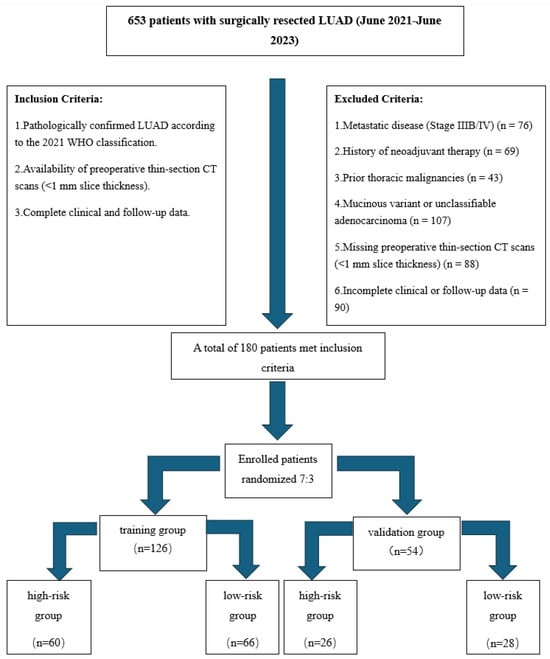
Figure 1
Open AccessSystematic Review
CAR-T Cell Therapy for Acute Myeloid Leukemia: Where Do We Stand Now?
by
Pilar Lloret-Madrid, Pedro Chorão, Manuel Guerreiro and Pau Montesinos
Curr. Oncol. 2025, 32(6), 322; https://doi.org/10.3390/curroncol32060322 - 30 May 2025
Abstract
Background: Patients with refractory and relapsed acute myeloid leukemia (R/R AML) face a dismal prognosis. CAR-T therapy has emerged as a potential treatment option. This study assesses the available clinical evidence on CAR-T in R/R AML, focusing on safety and efficacy outcomes.
[...] Read more.
Background: Patients with refractory and relapsed acute myeloid leukemia (R/R AML) face a dismal prognosis. CAR-T therapy has emerged as a potential treatment option. This study assesses the available clinical evidence on CAR-T in R/R AML, focusing on safety and efficacy outcomes. Methods: We included studies on CAR-T therapy for R/R AML published from June 2014 to January 2025. Data on patient and disease characteristics, CAR-T constructs, response rates, post-CAR-T allogeneic HSCT (allo-HSCT), and safety outcomes were analyzed. Results: Twenty-five CAR-T clinical trials involving 296 patients were identified. The most frequently targeted antigens were CD33, CD123, and CLL-1, while CD7, CD19, NKG2D, and CD38 were also explored. Responses were heterogeneous and often short-lived when not consolidated with allo-HSCT. Cytokine release syndrome and neurotoxicity were generally low grade and manageable. Prolonged and severe myelosuppression was a frequent limiting toxicity, often requiring allo-HSCT to restore hematopoiesis. Disease progression was the leading cause of death, followed by infections. Conclusions: CAR-T cell therapy may represent a feasible therapeutic strategy, particularly as bridging to allo-HSCT to mitigate myelotoxicity and improve long-term outcomes. Nevertheless, it remains in the early stages of development and faces significant efficacy and safety challenges that must be addressed in future trials to enable the expansion of this promising therapeutic approach for a population with high unmet medical needs.
Full article
(This article belongs to the Special Issue Future Perspectives for Treatment and Diagnosis of Acute Myeloid Leukemia (AML))
►▼
Show Figures
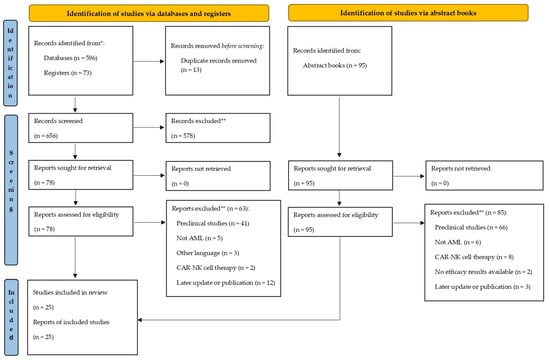
Figure 1
Open AccessArticle
Can Deep Learning-Based Auto-Contouring Software Achieve Accurate Pelvic Volume Delineation in Volumetric Image-Guided Radiotherapy for Prostate Cancer? A Preliminary Multicentric Analysis
by
Cristiano Grossi, Fernando Munoz, Ilaria Bonavero, Eulalie Joelle Tondji Ngassam, Elisabetta Garibaldi, Claudia Airaldi, Elena Celia, Daniela Nassisi, Andrea Brignoli, Elisabetta Trino, Lavinia Bianco, Silvia Leardi, Diego Bongiovanni, Chiara Valero and Maria Grazia Ruo Redda
Curr. Oncol. 2025, 32(6), 321; https://doi.org/10.3390/curroncol32060321 - 30 May 2025
Abstract
Background: Radiotherapy (RT) is a mainstay treatment for prostate cancer (PC). Accurate delineation of organs at risk (OARs) is crucial for optimizing the therapeutic window by minimizing side effects. Manual segmentation is time-consuming and prone to inter-operator variability. This study investigates the performance
[...] Read more.
Background: Radiotherapy (RT) is a mainstay treatment for prostate cancer (PC). Accurate delineation of organs at risk (OARs) is crucial for optimizing the therapeutic window by minimizing side effects. Manual segmentation is time-consuming and prone to inter-operator variability. This study investigates the performance of Limbus® Contour® (LC), a deep learning-based auto-contouring software, in delineating pelvic structures in PC patients. Methods: We evaluated LC’s performance on key structures (bowel bag, bladder, rectum, sigmoid colon, and pelvic lymph nodes) in 52 patients. We compared auto-contoured structures with those manually delineated by radiation oncologists using different metrics. Results: LC achieved good agreement for the bladder (median Dice: 0.95) and rectum (median Dice: 0.83). However, limitations were observed for the bowel bag (median Dice: 0.64) and sigmoid colon (median Dice: 0.6), with inclusion of irrelevant structures. While the median Dice for pelvic lymph nodes was acceptable (0.73), the software lacked sub-regional differentiation, limiting its applicability in certain other oncologic settings. Conclusions: LC shows promise for automating OAR delineation in prostate radiotherapy, particularly for the bladder and rectum. Improvements are needed for bowel bag, sigmoid colon, and lymph node sub-regionalization. Further validation with a broader and larger patient cohort is recommended to assess generalizability.
Full article
(This article belongs to the Special Issue Evolution of Treatments of Prostate Cancer: From Biology to Current Advanced Technologies)
►▼
Show Figures
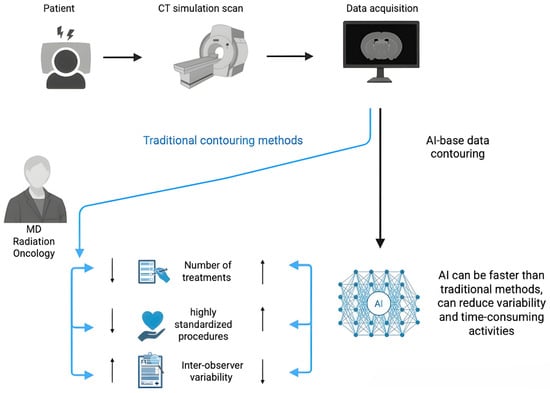
Figure 1
Open AccessArticle
Evaluating Management of Extra-Abdominal Desmoid Fibromatosis: A Retrospective Analysis of Treatments, Outcomes and Recurrence Patterns
by
Vidhi Saraf, Hariharan Triplicane Dwarakanathan, Al-Muaayad Al-Abri, Ioanna Nixon, Sarah Vaughan, Ashish Mahendra and Sanjay Gupta
Curr. Oncol. 2025, 32(6), 320; https://doi.org/10.3390/curroncol32060320 - 30 May 2025
Abstract
Background: Desmoid fibromatosis (DF) is a rare, locally aggressive soft tissue tumour with unpredictable clinical behaviour. Historically, treatment has involved surgery; however, contemporary guidelines, such as those from the Desmoid Tumour Working Group, advocate active surveillance. This article reviews current perspectives on DF,
[...] Read more.
Background: Desmoid fibromatosis (DF) is a rare, locally aggressive soft tissue tumour with unpredictable clinical behaviour. Historically, treatment has involved surgery; however, contemporary guidelines, such as those from the Desmoid Tumour Working Group, advocate active surveillance. This article reviews current perspectives on DF, focusing on epidemiology, pathogenesis, treatment strategies, emerging research directions and cost effectiveness based on our experience at the West of Scotland Musculoskeletal Oncology Service, Glasgow Royal Infirmary (GRI). Methodology: We reviewed 101 patients diagnosed with desmoid fibromatosis between 2010 and 2024. A review of patient records was conducted to gather information on demographics, date of diagnosis, prior treatment, treatment initiation, intervention types, imaging intervals, follow-up duration, recurrence rate for surgery and other intervention, and discharge timelines. All data was systematically organized and analyzed to assess our outcomes. Results: Out of 101 patients with DF in the study, 66% were females. The most common site of primary tumour was lower extremity (39.6%) followed by near equal distribution in upper extremity and trunk. Out of the total cases, 72 (71.2%) were successfully managed with active surveillance involving serial imaging and clinical reviews in accordance with European guidelines. A total of 22 patients (21%) received treatment: 10 underwent surgery alone, 2 had surgery combined with radiotherapy, 8 received only radiotherapy, 1 was treated with hormonal therapy and 1 participated in a trial with Nirogacestat. Of the seven remaining patients, six had unplanned surgery outside followed by active surveillance at GRI. One patient was on alternative treatment modality, homeopathy. The average number of MRI scans per patient was 3.11, with many patients requiring significantly more imaging. MRI surveillance varies significantly in desmoid tumours due to their heterogeneous behaviour. Active or symptomatic tumours often require more frequent scans (every 3–6 months), while stable cases may need only imaging annually or just clinical monitoring. Recurrence was noted in eight patients, all of which were related to prior surgery. The total combined cost of imaging and appointments exceeds £6500 per patient in active surveillance. Conclusions: We conclude that most patients with desmoid fibromatosis in our cohort were effectively treated with active surveillance, consistent with current European guidelines. Surgical management of desmoid fibromatosis in our cohort is historic and has shown a significant recurrence risk. Our study proposes a revised follow-up protocol that significantly reduces costs without compromising on patient care. We suggest a two-year surveillance period for stable disease with patient-initiated return to reduce unnecessary clinic visits, imaging and healthcare costs.
Full article
(This article belongs to the Special Issue An In-Depth Review of Desmoid Tumours)
►▼
Show Figures
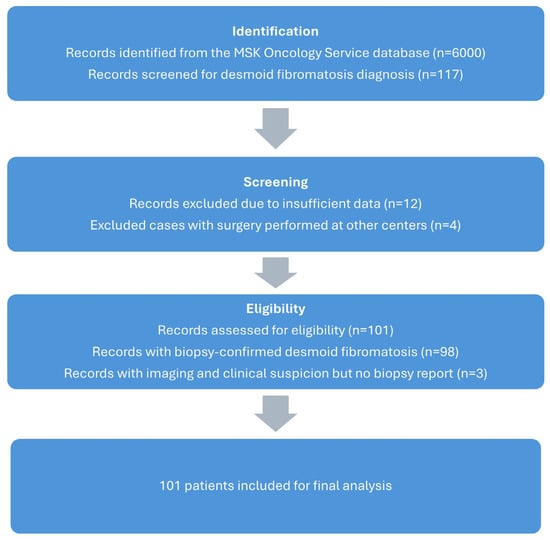
Figure 1
Open AccessReview
Allogeneic Stem Cell Transplantation: The Relevance of Conditioning Regime Intensity for Myelodysplastic Syndromes (MDS)
by
Tobias Berg, Brittany Salter, Michael Radford, He Tian Tony Chen and Brian Leber
Curr. Oncol. 2025, 32(6), 319; https://doi.org/10.3390/curroncol32060319 - 30 May 2025
Abstract
Allogeneic hematopoietic cell transplantation (alloHCT) is the sole curative therapy for myelodysplastic syndrome (MDS). While alloHCT clearly confers a significant survival advantage in high-risk MDS, it is less clear how the disease burden and impact of conditioning intensity impact survival. This review addresses
[...] Read more.
Allogeneic hematopoietic cell transplantation (alloHCT) is the sole curative therapy for myelodysplastic syndrome (MDS). While alloHCT clearly confers a significant survival advantage in high-risk MDS, it is less clear how the disease burden and impact of conditioning intensity impact survival. This review addresses critical issues surrounding this topic, emphasizing the unique cell biology of MDS and the evolving concepts of conditioning intensity compared to other diseases, including acute myeloid leukemia (AML). The review is structured around three interconnected themes. First, it clarifies the varying interpretations of conditioning intensity. Second, it examines the interplay between disease burden at transplant and conditioning intensity in determining outcomes, including a comparative analysis with acute myeloid leukemia (AML) to highlight similarities and differences. Third, it explores the relationship between conditioning regimen intensity and immune reconstitution, particularly focusing on the graft-versus-tumor (GvT) effect and its potential modulation by conditioning intensity. Understanding the stem cell target of conditioning regimens is emphasized, as the persistence of the underlying MDS stem cell necessitates a thorough understanding of this concept for improved therapeutic strategies.
Full article
(This article belongs to the Special Issue Allogeneic Stem Cell Transplantation: Does the Conditioning Regimen Intensity Still Matter?)
►▼
Show Figures
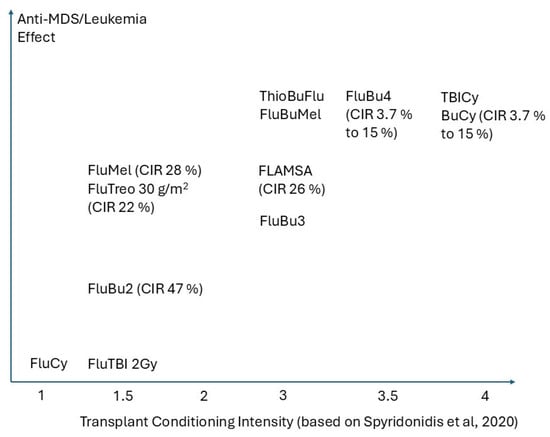
Figure 1
Open AccessArticle
The Design of a Patient-Centered Hierarchal Composite Outcome for a Multi-Center Randomized Controlled Trial in Metastatic Bone Disease
by
Hadia Farrukh, Abbey Kunzli, Olivia Virag, Nathan O’Hara, Sheila Sprague, Amy Cizik, Ricardo Gehrke-Becker, Thomas Schubert and Michelle Ghert
Curr. Oncol. 2025, 32(6), 318; https://doi.org/10.3390/curroncol32060318 - 30 May 2025
Abstract
The proximal femur represents the most frequent site in the appendicular skeleton for metastatic bone disease (MBD) to occur, with a high risk for pathologic fracture. While surgical stabilization is typically used to manage fractures, reconstruction approaches are gaining popularity due to improved
[...] Read more.
The proximal femur represents the most frequent site in the appendicular skeleton for metastatic bone disease (MBD) to occur, with a high risk for pathologic fracture. While surgical stabilization is typically used to manage fractures, reconstruction approaches are gaining popularity due to improved survival. Previous studies have focused on clinical outcomes, but patient-centered outcomes remain underexplored. This study aims to develop a patient-centered primary outcome for the Proximal FEmur Reconstruction or Internal Fixation fOR Metastases (PERFORM) Randomized Controlled Trial, employing a mixed-methods approach. First, a focus group with advanced cancer patients and caregivers identified relevant outcomes. Next, a discrete choice experiment (DCE) assessed the importance of these outcomes among stakeholders, including surgeons, patients and caregivers. The most important components for the primary outcome were identified: mortality within twelve months, physical function assessed at four months using the PROMIS® Global Physical Function score, and the number of days at home within twelve months. The DCE further confirmed that survival and physical function were most prioritized. The PERFORM trial’s primary outcome, developed through extensive stakeholder engagement, will guide the evaluation of surgical approaches for MBD of the proximal femur and has the potential to influence patient-centered practice.
Full article
(This article belongs to the Section Bone and Soft Tissue Oncology)
►▼
Show Figures
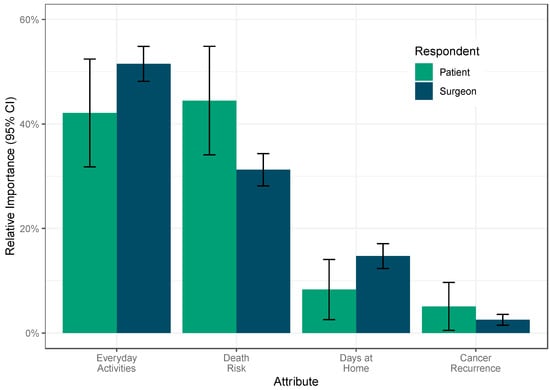
Figure 1
Open AccessArticle
Molecular Classification Guides Fertility-Sparing Treatment for Endometrial Cancer and Atypical Hyperplasia Patients
by
Yiqin Wang, Linlin Bo, Xiaowei Fan, Nan Kang, Xiaobo Zhang, Li Tian, Rong Zhou and Jianliu Wang
Curr. Oncol. 2025, 32(6), 317; https://doi.org/10.3390/curroncol32060317 - 30 May 2025
Abstract
Objectives: The objective of this study was to investigate the significance of molecular classification in guiding treatment decisions for patients with endometrial cancer (EC) or atypical hyperplasia (AH) undergoing fertility-sparing treatment (FST), particularly for those with non-NSMP subtypes. Methods: We conducted a retrospective
[...] Read more.
Objectives: The objective of this study was to investigate the significance of molecular classification in guiding treatment decisions for patients with endometrial cancer (EC) or atypical hyperplasia (AH) undergoing fertility-sparing treatment (FST), particularly for those with non-NSMP subtypes. Methods: We conducted a retrospective cohort study involving EC/AH patients undergoing FST and molecular classification using next-generation sequencing at Peking University People’s Hospital between June 2020 and September 2023. Results: A total of 118 EC/AH patients were included, including 92 cases with NSMP, 11 with MMRd, 11 with POLEmut, and 4 with p53abn. (1) Of the 11 patients with MMRd, 6 achieved a complete response (CR) with 1 case receiving progestin, 3 cases showed insensitivity to the initial progestin before transitioning to a combined regimen of progestin and a PD-1 inhibitor, and 2 cases initially received progestin plus a PD-1 inhibitor. There were no significant differences in the cumulative CR rates between the MMRd and NSMP subgroups but a trend of a lower relapse-free-survival (RFS) rate for the MMRd subgroup (p = 0.074). (2) Of the 11 cases with POLEmut, 10 achieved CR but 4 relapsed. There was also a trend for a lower RFS rate in the POLEmut patients (p = 0.069) compared with the NSMP subgroup. (3) Three of the four patients with p53mut achieved CR after treatment with the GnRHa plus LNG-IUS regimen. Conclusion: The selection of appropriate regimens may improve FST outcomes in EC/AH patients with molecular classification of non-NSMP subtypes. Immunotherapy is an effective fertility-preserving approach for patients with MMRd.
Full article
(This article belongs to the Special Issue Exploring Rare Gynecologic Tumors: A Cutting-Edge Perspective on Modern Diagnostic and Therapeutic Strategies)
►▼
Show Figures

Figure 1
Open AccessReview
Necessity and Reconstruction Methods of Splenic Vein After Resection of the Portomesenteric Junction During Resections for Pancreatic Cancer
by
Moath Alarabiyat and Nikolaos Chatzizacharias
Curr. Oncol. 2025, 32(6), 316; https://doi.org/10.3390/curroncol32060316 - 30 May 2025
Abstract
Pancreatic cancer involving the porto-mesenteric junction (PMJ) represents a challenge to pancreatic surgeons. Restoring mesenteric venous drainage is an essential component of vascular reconstruction after tumour resection. In contrast, management of the splenic venous drainage can involve the ligation or reconstruction of the
[...] Read more.
Pancreatic cancer involving the porto-mesenteric junction (PMJ) represents a challenge to pancreatic surgeons. Restoring mesenteric venous drainage is an essential component of vascular reconstruction after tumour resection. In contrast, management of the splenic venous drainage can involve the ligation or reconstruction of the splenic vein (SV). Evidence suggests that splenic vein ligation (SVL) is commonly associated with sinistral portal hypertension (SPH), especially if multiple venous tributaries were divided to facilitate resection. Although the association between SVL and SPH is well documented, the risk of symptomatic SPH is not widely reported, presumably due to the low incidence and poor survival of pancreatic cancer patients. Splenic vein reconstruction (SVR) has been proposed to decrease the risk of SPH but is fraught with technical complexity and increased morbidity. Moreover, SVR does not guarantee the prevention of SPH, as patency rates vary and associated hemodynamic changes are unpredictable. Patient selection and the surgical expertise available can guide SV intraoperative management, taking into consideration the risks and benefits associated with each approach. A comprehensive review of the current literature highlighting the incidence and clinical impact of SPH after the resection of pancreatic cancer involving the PMJ is presented.
Full article
(This article belongs to the Section Gastrointestinal Oncology)
►▼
Show Figures
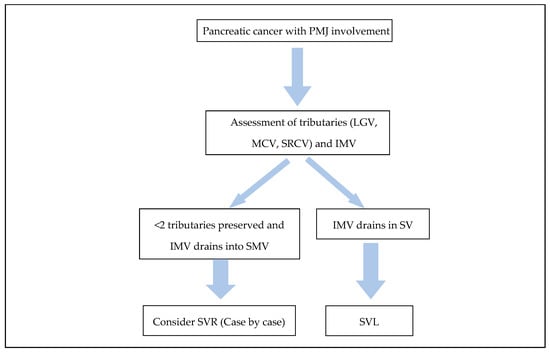
Figure 1
Open AccessArticle
Unraveling Racial Disparities in Papillary Thyroid Cancer: A Comparative Bulk RNA-Sequencing Gene Expression Analysis
by
Luiza Barseghyan, Samuel Chan, Celina R. Yamauchi, Andrea Shields, Mia C. Perez, Alfred A. Simental and Salma Khan
Curr. Oncol. 2025, 32(6), 315; https://doi.org/10.3390/curroncol32060315 - 29 May 2025
Abstract
Papillary thyroid cancer (PTC) is the most common thyroid malignancy, with significant racial/ethnic disparities in incidence and survival. Asians have the highest incidence, and recurrence, while African Americans experience the lowest survival rates, suggesting contributions from genetic, environmental, and healthcare-related factors. While socioeconomic
[...] Read more.
Papillary thyroid cancer (PTC) is the most common thyroid malignancy, with significant racial/ethnic disparities in incidence and survival. Asians have the highest incidence, and recurrence, while African Americans experience the lowest survival rates, suggesting contributions from genetic, environmental, and healthcare-related factors. While socioeconomic disparities play a role, emerging evidence highlights genetic and molecular mechanisms underlying these differences. This study examines differentially expressed genes (DEGs) to identify potential molecular drivers of PTC disparities. Bulk RNA-sequencing (RNA-seq) data from 20 PTC tumors (5 White, 5 African American, 5 Hispanic, and 5 Asian) were analyzed using the UseGalaxy platform. Preprocessing included quality control, adapter trimming, and genome alignment. Differential expression analysis identified genes with p < 0.01 and fold change ≥ 2.5. Volcano plots visualized significant DEGs. Gene Set Enrichment Analysis (GSEA) via eVITTA identified enriched pathways. TCGA data analysis validated racial/ethnic differences in gene expression. Ethnic groups exhibited distinct gene expression profiles. GSEA revealed differences in cell proliferation, immune regulation, and thyroid hormone metabolism. African Americans showed immune suppression and reduced tumor suppressor activity, while Asians exhibited enriched cell cycle and DNA repair pathways. Significant differences were confirmed in some of the genes in TCGA data analysis. This study identifies genetic factors contributing to racial disparities in PTC, emphasizing the need for further validation in larger cohorts and functional studies. Understanding these molecular differences may inform personalized treatment strategies and improve PTC outcomes across diverse populations.
Full article
(This article belongs to the Special Issue Clinical Advances in Thyroid Cancer: Biomarker-Driven Diagnosis, Oncogenesis Insights, and Translational Therapies)
►▼
Show Figures
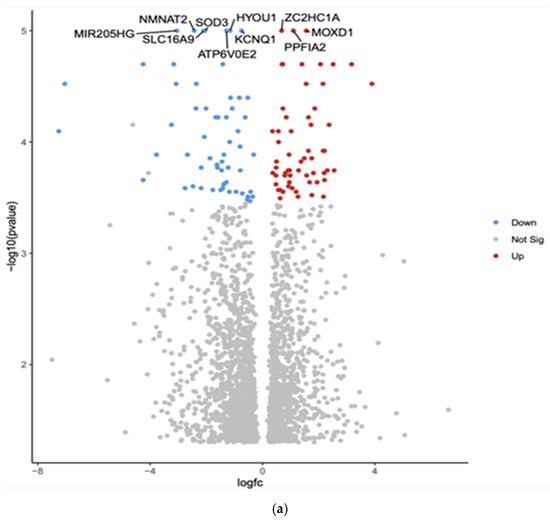
Figure 1
Open AccessArticle
The Unmet Needs of Palliative Care Among Young and Middle-Aged Patients with Advanced Cancer: A Qualitative Study
by
Renhui Wen, Xinyi Liu and Yu Luo
Curr. Oncol. 2025, 32(6), 314; https://doi.org/10.3390/curroncol32060314 - 29 May 2025
Abstract
Objective: This study aimed to explore the unmet palliative care needs among young and middle-aged (YMA) Chinese patients with advanced cancer. Methods: We used the principle of maximum difference. A total of 16 YMA patients with advanced cancer from cancer hospital were recruited.
[...] Read more.
Objective: This study aimed to explore the unmet palliative care needs among young and middle-aged (YMA) Chinese patients with advanced cancer. Methods: We used the principle of maximum difference. A total of 16 YMA patients with advanced cancer from cancer hospital were recruited. Semi-structured, in-depth, and face-to-face interviews were conducted from 28 August 2023 to 23 October 2023. The recorded audio of each interview was typed into Word software with each personal code. The interview transcripts were coded using the method of inductive content analysis. Results: Four themes and 14 sub-themes were identified in participants’ descriptions of care needs: (1) symptom management needs: need for pain relief, need for anti-emetics, and need for aid in managing fatigue; (2) psychological support needs: help reducing fear of pain, help achieving a better death, and help with parents’ negative reactions; (3) social support needs: taking care of children, emotional support from family members, consultation and emotional support from other cancer patients, and company and guidance of healthcare personnel; (4) information needs: better understanding of disease trajectory and future care needs, better access to palliative care information, and more participation in medical decision-making. Conclusions: According to the results of this study, the unmet palliative care needs of YMA patients with advanced cancer are diverse, but they have not been fully recognized and met. Therefore, medical staff should develop effective management strategies and explore patients’ needs in an all-around way. Future studies will further develop the scale of unmet needs for palliative care to accurately identify needs and improve patients’ quality of life.
Full article
(This article belongs to the Section Palliative and Supportive Care)
Open AccessReview
Hepatic Artery Infusion Chemotherapy for Hepatocellular Carcinoma: Clinical Advancements
by
Wei Xu, Qing Li and Bin Liang
Curr. Oncol. 2025, 32(6), 313; https://doi.org/10.3390/curroncol32060313 - 28 May 2025
Abstract
Intermediate- and advanced-stage hepatocellular carcinoma (HCC) continues to present significant therapeutic challenges. Hepatic artery infusion chemotherapy (HAIC), a well-established locoregional treatment for unresectable HCC, has recently demonstrated promising clinical outcomes both as monotherapy and in combination with systemic therapies. This comprehensive review examines
[...] Read more.
Intermediate- and advanced-stage hepatocellular carcinoma (HCC) continues to present significant therapeutic challenges. Hepatic artery infusion chemotherapy (HAIC), a well-established locoregional treatment for unresectable HCC, has recently demonstrated promising clinical outcomes both as monotherapy and in combination with systemic therapies. This comprehensive review examines recent clinical advances in HAIC for HCC, with particular emphasis on evolving treatment regimens and their therapeutic efficacy.
Full article
(This article belongs to the Special Issue Combined Therapies for Hepatocellular Carcinoma)
►▼
Show Figures
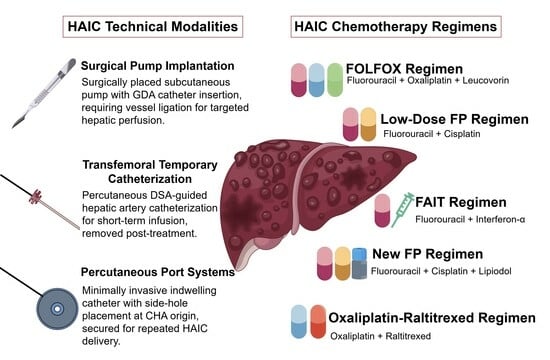
Graphical abstract
Open AccessArticle
Methylation Status of the Telomerase Reverse Transcriptase Promoter in Parotid Tumours and Adjacent Parotid Gland Tissue: A Pilot Study on the Implications for Recurrence and Development of Malignancy
by
António Paiva-Correia, Joana Apolónio, Alfons Nadal, José Ricardo Brandão, Nádia Silva, Bianca Machado, Ivan Archilla, Pedro Castelo-Branco and Henrik Hellquist
Curr. Oncol. 2025, 32(6), 312; https://doi.org/10.3390/curroncol32060312 - 28 May 2025
Abstract
Background/Objectives: The methylation of the hypermethylated oncological region (THOR) of human telomerase reverse transcriptase (hTERT) may forecast tumour aggressiveness. This pilot study aimed to evaluate THOR methylation as a potential biomarker for recurrence/malignant transformation in salivary gland pleomorphic adenomas (PA). Methods: THOR methylation
[...] Read more.
Background/Objectives: The methylation of the hypermethylated oncological region (THOR) of human telomerase reverse transcriptase (hTERT) may forecast tumour aggressiveness. This pilot study aimed to evaluate THOR methylation as a potential biomarker for recurrence/malignant transformation in salivary gland pleomorphic adenomas (PA). Methods: THOR methylation was assessed by quantitative pyrosequencing in 96 parotid tissue samples (benign and malignant), including non-neoplastic parotid tissue, PA, recurrent PA (rPA), and carcinomas, along with their adjacent tissues. TERT promoter mutations (TPMs) were analysed by Sanger sequencing. Results: THOR methylation significantly differed across the seven groups. Malignant tissues showed higher THOR methylation than non-neoplastic tissues, whereas benign tumours showed no significant difference from non-neoplastic tissue. THOR methylation in rPA was closer to carcinoma than to normal tissue, similar in rPA and tissues adjacent to rPA, and higher in tissues adjacent to carcinomas than in non-neoplastic tissues. A subset of PA-adjacent tissues showed epigenetic alterations, suggesting an increased risk of recurrence or malignant transformation (5–15%). No TPMs were detected. Conclusions: THOR methylation may add information to differentiate normal from carcinogenic tissues and, as such, may be included in a biomarkers panel. Epigenetic alterations in PA-adjacent tissues with normal histology highlight the need for improved diagnostic markers.
Full article
(This article belongs to the Section Head and Neck Oncology)
►▼
Show Figures

Graphical abstract

Journal Menu
► ▼ Journal Menu-
- Current Oncology Home
- Aims & Scope
- Editorial Board
- Reviewer Board
- Topical Advisory Panel
- Instructions for Authors
- Special Issues
- Topics
- Sections & Collections
- Article Processing Charge
- Indexing & Archiving
- Editor’s Choice Articles
- Most Cited & Viewed
- Journal Statistics
- Journal History
- Journal Awards
- Society Collaborations
- Conferences
- Editorial Office
Journal Browser
► ▼ Journal Browser-
arrow_forward_ios
Forthcoming issue
arrow_forward_ios Current issue - Volumes not published by MDPI
Highly Accessed Articles
Latest Books
E-Mail Alert
News
Topics
Topic in
Biomedicines, Current Oncology, Diagnostics, Gastrointestinal Disorders, JCM, Livers, Transplantology
Advances in Gastrointestinal and Liver Disease: From Physiological Mechanisms to Clinical Practice
Topic Editors: Davide Giuseppe Ribaldone, Gian Paolo CavigliaDeadline: 20 June 2025
Topic in
Biomolecules, CIMB, Sci. Pharm., Cancers, Current Oncology, Cells
The Role of Extracellular Vesicles as Modulators of the Tumor Microenvironment
Topic Editors: Nils Ludwig, Miroslaw J SzczepanskiDeadline: 30 June 2025
Topic in
Cancers, Diagnostics, JCM, Current Oncology, Gastrointestinal Disorders, Biomedicines, Therapeutics
Hepatobiliary and Pancreatic Diseases: Novel Strategies of Diagnosis and Treatments
Topic Editors: Alessandro Coppola, Damiano Caputo, Roberta Angelico, Domenech Asbun, Chiara MazzarelliDeadline: 20 August 2025
Topic in
Cancers, Current Oncology, JCM, Medicina, Onco
Cancer Biology and Radiation Therapy: 2nd Edition
Topic Editors: Chang Ming Charlie Ma, Ka Yu Tse, Ming-Yii Huang, Mukund SeshadriDeadline: 16 October 2025

Conferences
Special Issues
Special Issue in
Current Oncology
Recent Advances in Transplant Oncology
Guest Editors: Boris Luis Gala-López, Blaire AndersonDeadline: 10 June 2025
Special Issue in
Current Oncology
Advances in B-cell Lymphoma: From Diagnostics to Cure
Guest Editors: Leo Gordon, Megan E. MelodyDeadline: 15 June 2025
Special Issue in
Current Oncology
Artificial Intelligence in Thoracic Surgery
Guest Editor: Marc BoadaDeadline: 15 June 2025
Special Issue in
Current Oncology
Immunotherapy in Thoracic Malignancies
Guest Editors: Cheryl Ho, Randeep SanghaDeadline: 15 June 2025
Topical Collections
Topical Collection in
Current Oncology
New Insights into Prostate Cancer Diagnosis and Treatment
Collection Editor: Sazan Rasul
Topical Collection in
Current Oncology
New Insights into Breast Cancer Diagnosis and Treatment
Collection Editors: Filippo Pesapane, Matteo Suter
Topical Collection in
Current Oncology
Editorial Board Members’ Collection Series in "Exercise and Cancer Management"
Collection Editors: Linda Denehy, Ravi Mehrotra, Nicole Culos-Reed
Topical Collection in
Current Oncology
Editorial Board Members’ Collection Series: Contemporary Perioperative Concepts in Cancer Surgery
Collection Editors: Vijaya Gottumukkala, Jörg Kleeff









